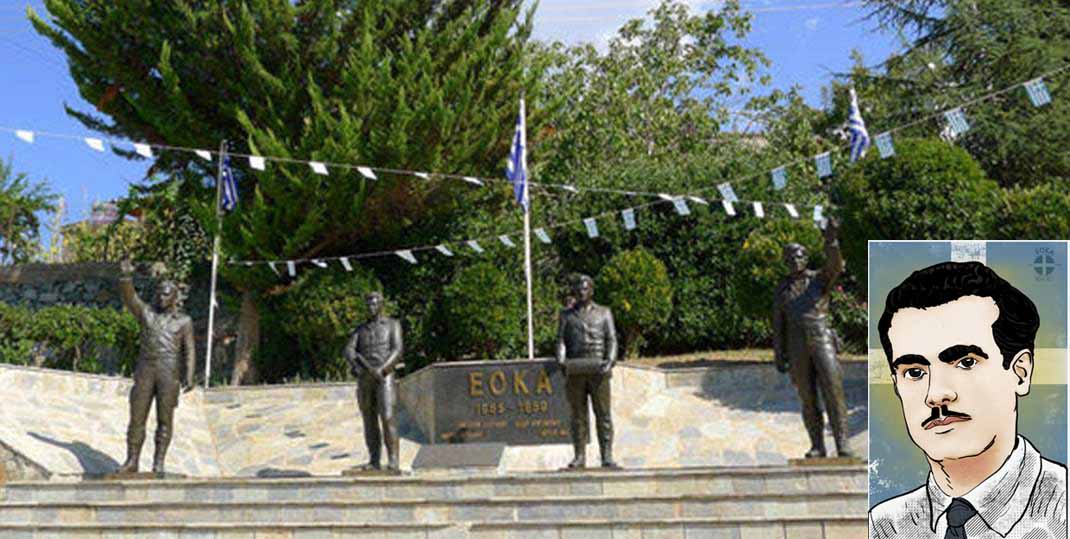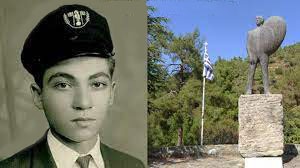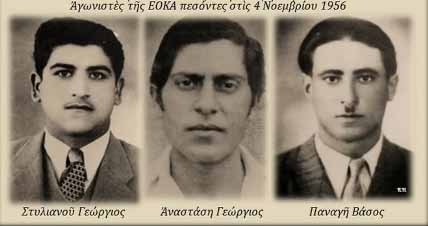A Patriot and a Fighter for Freedom
Panagiotis Georgiadis was born in 1929 in the small village of Livadeia, Nicosia. He grew up working in a private company. The British colonial policies angered him from a young age.
Joining the Underground
In 1954, Georgiadis secretly joined EOKA at age 25. He used his knowledge of the Troodos mountains to hide weapons. he served as Digenis’ liaison with Ethnarch Makarios under the pseudonym Ikaros.
Key Role in the Liberation Movement
His role was transporting and hiding wanted persons, working closely with his fellow fighters, who had a hideout in their house in Livadia. Among others worked closely with the Nicosia sector chiefs and especially with Polykarpos Giorkatzis, whom he had trafficked many times.
Georgiadis became a key guerrilla fighter. He organized attacks on British military installations. His tactics disrupted colonial control. He inspired many young Cypriots to join the resistance.
Wanted by the British
In October 1956, he was anounced wanted by the British and and forced to move to the mountains as a guerrilla. He joined the group of Stylianos Lenas, who was in charge of the southern part of the Grigoris Afxentiou sector in Pitsilia.
Panagiotis Georgiadis: The Mountain Guerrilla (1956-1958)
Fugitive in the Troodos
In October 1956, British forces placed Panagiotis Georgiadis on their most-wanted list. He escaped to the Pitsilia mountains, joining Stylianos Lenas’ guerrilla unit. This group operated in southern Grigoris Afxentiou’s sector.
Master Bomb-Maker
Georgiadis specialized in crafting explosives. He ran grenade and mine workshops in Kato and Pano Amiantos villages. Lenas had relocated his operations here, creating a secret arms network. Their attacks became so relentless that Digenis (Grivas) ordered them to reduce activity.
The 1957 Crisis
British forces captured Stylianos Lenas on February 17, 1957. After Dimitrakis Christodoulou died in combat, Georgiadis fled to Limassol with fellow fighter Evagoras Papachristoforou. He spent months evading British patrols in the city.
Rebuilding the Resistance
By mid-November 1957, Georgiadis returned to his home region. He found the local EOKA network devastated by mass arrests. Immediately, he began recruiting new members and restoring supply lines.
The Fatal Demonstration
On June 20, 1958, tragedy struck in Kourdali village. Georgiadis was teaching bomb-making techniques at Andreas Patsalidis’ home. As he demonstrated a high-powered mine, the device detonated prematurely. The explosion killed four fighters instantly:
Panagiotis Georgiadis
Andreas Patsalidis
Alekos Konstantinou
Costas Anaxagorou
Legacy: The blast site became a secret memorial. Locals still whisper about the “four eagles” who fell that day. Their sacrifice accelerated Cyprus’ path to independence.
(Note: British reports initially misidentified Georgiadis among the captured rather than killed, causing weeks of confusion in their manhunt.)y for the manufacture of grenades and mines in the villages of Kato and Pano Amiantos, where Stylianos Lenas had moved his workshops and developed a multifaceted action. The attacks of their group were so frequent that Digenis advised them to thin them out.




